15 - The
Beginning of the Insanity

It wasn't until the 1990s when
bottled H2O became an everyday common sight and a
symbol of our cultural desire towards fitness and
"health-consciousness". Even today health enthusiasts claim
drinking water often helps to "detox and boost the metabolism!"
There have been controversies about
chemicals leeching into the water from the soft plastic material
of bottles, but the FDA determined the containers "do not pose a
health risk to consumers."
IBISWorld reports that the,
"U.S. is the largest consumer
for bottled water in the world, followed by Mexico, China,
and Brazil".
14 - The
Bottled Water Scheme
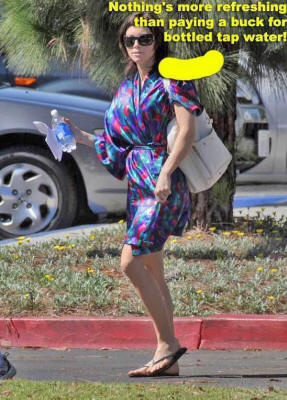
Regular drinking water
competes with itself in a bottle, but reviewing the cost
difference, you've got to wonder why or how?
As for the water piped into your
home or work place, it costs less than one penny per gallon!
Fairfax Water organization, (FCWA)
states,
"The average price of water in the U.S. is
about $1.50 for 1,000 gallons."
Let's look at your favorite 20 oz. bottled H2O,
it will run you up to $3 per bottle at the corner convenience
store and up to $4 at a posh restaurant or nightclub.
If you buy bulk at Costo or other
markets, the price averages are .31 cents per bottle, but that
still remains enormously expensive when compared to tap water.
Granted many don't like tap water quality, but modern technology
allows for an array of water filters.
In the mid-1990s, soda companies
found that the niche market for bottled water could be huge, why
not? The profits were obvious!
Pepsi and Coca-Cola jumped into a
race with their brands Aquafina and Dasani; they led the way to
making bottled water what it is today.
13 - What's
in an Ad?
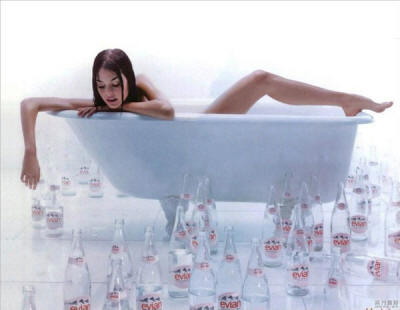
It appears people really love
their bottled water, today there are dozens of brands and that
merits big advertising! The Huffington Post stated that
in 2013
Americans drank 58 gallons of bottled water per capita!
With the help of advertisements,
bottled water has gone from "reservoir to faddish luxury item to
mass commodity."
Bottled H2O is being
directly or indirectly sold as:
healthy, smart, pure, sexy,
clean and simple, it is "the stuff of life."
Ad slogans go like this,
-
Dasani by Coca-Cola: "Treat
yourself well. Everyday."
-
Volvic: "Fills you with
volcanicity."
-
Aquafina by Pepsi-Cola: "So
pure, we promise nothing."
-
Arrowhead by Mountain Spring
Water, USA: "Arrowhead. It's Better Up Here!"
-
Evian: "Approved by your
body as a source of youth."
-
Pure Life by Nestle: "DRINK
BETTER. LIVE BETTER."
No matter how much emotion an advertisements
conjures, be it love, fear or rage, in the end water is just
water whether bottled or tap.
The difference is only
in taste, and Evian has to be the only one tastier than tap
water, but that's only if tap water hasn't been filtered.
"Taste comes from negligible
amounts of minerals" and filtered tap water removes minerals
and chemicals rendering it with no hint of aftertaste, even
at room temperature and most importantly the "2 hydrogen to
1 oxygen" part of water we need never changes.
12 - The
Costs: Beyond Money
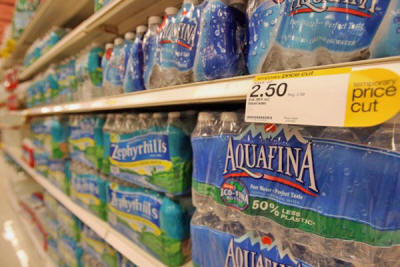
It’s absurd that the cost of designer water is at
a "280,000% markup" to your tap water and it's reaching record
heights in consumption.
The comforting illusion of better
water (bottled water) requires a lot of resource to manufacture
and merchandise. The industry requires the cost of natural
rivers and streams, semi-truck exhaust and diesel fuel,
packaging, labeling, pollution of non-biodegradable plastic and
the managing of recycling centers.
If you visit a gas station store or
grocery store, you're bound to see that a full third of all cold
beverages on sale are bottled water.
The Sierra Club explains,
“Annually the water bottles
themselves take about 1.5 million tons of plastic to
manufacture for the global market.”
Did you know plastics come from oil
and therefore it takes 1.5 million barrels of oil a year?
Additionally the manufacturing
process releases toxins into the environment, such as nickel,
ethylbenzene, ethylene oxide and benzene. Even with current
plastic recycling centers,
“most used bottles end up in
landfills, adding to the landfill crisis."
11 - What
About Health and Safely?
m
There are relatively few regulations
on what bottled water contains.
The
Natural Resources Defense
Council's scientific
study
showed over 1/3 of the tested brands contain contaminants like
arsenic and carcinogenic compounds. Scientists agreed
though that the contaminants were negligible amounts and all of
the bottled water was safe to drink, but importantly the study
clearly showed how "bottled water purity" can be misleading.
On the World Health Organization's
(WHO) website, they claimed many Europeans believe natural
mineral waters have medicinal or health properties.
Although WHO didn't find evidence to
support the mineral water benefits. Many researchers conclude
that the benefits of bottled water are based mainly on a common
misconception.
A large majority of consumers drink bottled water
because they believe it has better health benefits, as well as
better taste.
Interestingly the Environmental News
Network reported, on the TV show Good Morning America, a taste
test revealed that NYC tap water was chosen as the favorite over
the oxygenated water 02, Poland Spring and Evian!
10 -
Reviewing Ecosystems

Corporations like
Coca-cola,
Nestle, Pepsi, Evian and Fiji Water are making billions of
dollars on water.
Many people are unhappy with their practices,
such as sucking up spring water from underground aquifers that
are the source of water for nearby streams, wells, and farms.
In Mecosta County, Michigan, Nestle
was court-ordered to stop taking spring water as it proved
threatening to the surrounding ecosystem. They have around 75
springs in the U.S. and are actively searching to take on more.
They own water rights in Aurora
County, Colorado, in which they’ve built a diversion of water to
the Arkansas River to replace water there, which they are
siphoning from underground aquifers that would normally feed
into that river.
What's important about the aquifers
is that they safely store precious water underground throughout
Colorado during the dry seasons.
Sarah Olson, producer of
the documentary 'Tapped,'
notes,
"Nestle has a history of pumping
more water than its permits allow."
She claims the situation is
difficult to monitor and easy for Nestle to take advantage of.
Aquifers are significant to the state's community survival,
especially with current warming climate trends.
9 - Nestles'
Monopoly
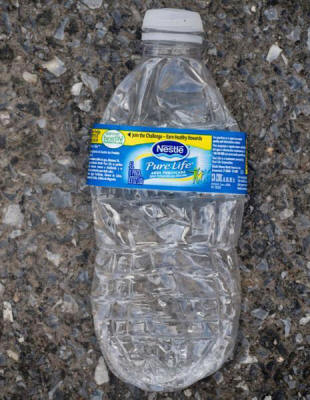
In order to sell and make money from water you
have to own or lease the land to which it's found.
Nestle has contracts with various
small towns for which they own water rights; these towns are
often also small in capital and influence. Are we in the U.S.
not thinking about the bigger picture?
Nestle's powerful army of
scientists, PR consultants, lawyers and lobbyists allow them to
stifle and suppress local opposition to its operations. In
California, it took 6 years for the tiny town of McCloud to
defeat Nestles plans to build a facility and take 1,250 gallons
per minute of Mount Shasta spring water.
Nestle then swiftly moved its plan
to Sacramento with more success.
‘The Sacramento News and Review'
reported that Michelle Smira, one of the mayor's top
volunteer advisors,
"stepped down to run her
consulting business, MMS Strategies. Guess who her big
client was? That would be Nestle."
Evidently she was hired by Nestle
Waters to win the "hearts and
minds, and gain building permits" for the controversial
water bottling facility.
Sacramento exists currently in a
drought and residents are asked to conserve water, all-the-while
Nestle by contract has no limit on how much water they can pump,
they're on a flat rate.
The City Councilmember Kevin
McCarty calculated,
"their profits margin will be
roughly 10,000 percent!"
8 - Nestle
As The Multinational
m
In Pakistan, Nestle controls a
town’s water supply, forcing local residents to dig deeper for
any non-polluted water that remains or they must pay Nestle’s
high price to get their water back.
In the
documentary film 'Bottled Life',
director Res Gehriger explains that in the U.S. and E.U.,
Nestle mainly sells spring water in the location that it
originates. Although in
developing countries, it's gone another route by extracting
local water and enriching it with minerals.
This bottled water is the company’s
Pure Life brand, it’s the top-selling bottled water brand
internationally.
Filmmaker, Gehriger was prevented
from entering into Pakistan’s bottling facility, although he
researched the area and found that the water levels had indeed
dramatically fallen. This is concerning because Pakistan's
public water system is known to be failing or is "close to
collapse."
Pure Life is harvested, manufactured
and marketed locally, but it's price is too high for the natives
to afford. In places like
Nigeria, where Nestle has also set up camp, African families
spend half their salaries on water.
Only the very wealthy can afford to
purchase Nestle's Pure Life.
7 - The Case
of Nestle/Perrier in Brazil

France's bottled mineral water
Perrier made it's debut in the 1770s, but
by 1990 the company ran into
trouble when it was tested in a U.S. lab, and the carcinogen,
Benzene was found.
Soon after in 1992, Nestle bought
Perrier and today the green emerald bottle sells in 140 counties
worldwide. Nestle also since acquired Poland Spring, San
Pellegrino and numerous other bottled water brands.
Nestle/Perrier, the corporation
opened a bottling plant
in Sao Lourenco, Brazil.
The area is
well known for its, "water circuits", and it's has the country's
most historic sources of mineral water. This was perfect for the
Nestle/Perrier's Pure Life brand, as the natural spring had what
many believed to be healing minerals.
But natives accused the company of
over-pumping and drying up the local waters.
Then a member of the International
Free Water Academy, Franklin Frederick said,
"If the water is pumped in
quantities greater than nature can replace it, its mineral
content will gradually decrease, bringing the change in
taste that we were noticing".
In
2006, four years later, the Federal Government found
Nestle/Perrier in violation of constitutional prohibitions on
de-mineralizing water; they were stopped and fined.
6 - It's All
About The Filter!

The thing about tap water is it's treated with
chlorine to kill bacteria.
The other part of the treatment is a
filtration process, which is more or less the same as what the
bottled water company’s use. Tap water is good and safe to
drink, that's
unless there’s fracking in your state,
then there’s fracking fluid seeping into the ground and that
can't be good!
If you don't care for the taste or
"feel" of chlorine coming through your tap, then it can be
removed easily enough with a filter.
In fact, a
Brita water filter works
wonders and if you'd like to keep the skin on your face soft and
younger looking, fill a washbasin with home filtered water and
wash you face!
Also to save money, keep the Brita
filters longer than the company recommends, it just the tap
water will drain through the filter a bit slower. We wouldn't
recommend walking about with a big Brita jug and chugging from
it, like in the image.
Instead, consider getting those
Aluminum Water Bottles that are
quite inexpensive and come in various sizes; they'll last
forever!
5 -
California's Water
m
Water and water rights is an on going political
issue for The Golden State.
It holds 30 million people and there
are over 5,680,000 acres of agricultural farmland. The question
California rubs up against, is whether to increase the
redistribution of water to agricultural and urban sectors, or
increase conservation and preserve the natural ecosystems of the
water sources.
The majority of California’s water
supply (75%) comes from north of Sacramento, while 80% of the
water feeds the southern 2/3rds of the state.
We've mention that
Nestle has a legal grip on a large portion of Sacramento water,
and the city is battling it out after realizing in hindsight
that they agreed to more than they should give.
The farming industry is huge in
California and 80-85% of all its water is being used for
agricultural purposes.
The Los Angeles Aqueduct
carries water from the Eastern Sierra Nevada down to Los
Angeles. The drinking water quality has less chlorine and is
noticeably "softer" nearer to its source.
Although controversial, 30% of all public water
providers in the state, fluoridate their water.
4 - Is It or
Is It Not?!

There’s a good chance that fancy
water you’ve just forked out a couple bucks for comes from the
same place, a municipal water supply!
Yes, there's an estimated 25% of
bottled water that actually comes from the municipal water
supply. Of course the water goes through a filtering process,
like reverse osmosis, deionization, activated carbon filtration
and other treatments.
Look at the label carefully, does it read
"purified" or "drinking water"?
If so, chances are it is from a
municipal water supply, and unless the water has been
“substantially” altered, it’s required to be stated on the
label, that the water’s from a municipal source.
Here's a list of bottled waters
which are from municipal sources:
Pepsi's Aquafina, Coke’s
Dasani, and now it looks like Nestle's Ice
Mountain Natural Spring Water is up in the air with a
class action lawsuit for a document revealing a 5 gal water
bottle that was defined by Nestle as, "municipal water
and/or well water" processed by Nestle's treatment plants
and repackaged with images of pristine glacial lakes and
mountains.
3 - Should
Water Be Privatized?

Peter Brabeck-Letmathe, is
the CEO and current Chairman of the $65 million Nestle
Corporation. In a YouTube video he describes that people's
access to water as being a basic human right is "extreme".
He also argues that the water supply
ought to have a market value and
be privatized,
"because people have a sense of
entitlement that causes them to waste copious amounts of
water."
This would mean the price we pay today for our
home tap would be small in comparison.
Corporations like Nestle,
Pepsi and Coca-cola are pining
to buy up or lease land and water rights globally, some of us in
the end could be obligated to their fees!
Brabeck-Letmathe is quoted in
The Guardian saying that he would allow people a limited amount
of water as a human right, and this would be,
"five liters of water for daily
hydration and 25 liters for minimum hygiene and he would
charge for the remainder of the 98.5% of the water if used."
What would happen to the poor who
cannot afford to pay these said corporations? Should they suffer
from starvation due to their lack of financial wealth?
2 - Water
Wars?
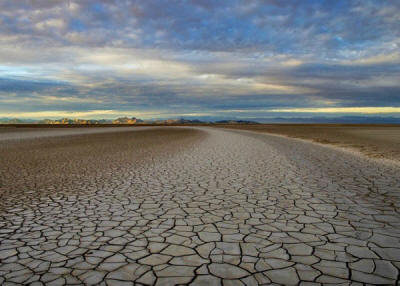
With climate change, it seems that
reports show droughts are our new reality.
Mark Twain
wrote,
“Whiskey is for drinking;
water is for fighting over”.
Water seems to be everywhere, but
throughout history it's always been a precious resource.
The water source taken from the
Colorado River is divided up for U.S. states, and they’re
running at abnormally low water levels. The river feeds the
upper states (Colorado, Utah, Wyoming) and then it delivers a
certain amount of water to the Lower Basin (New Mexico, Arizona,
California, Nevada).
An early provision also allows
California and its rapidly growing coastal cities to grab excess
water coming off the Colorado River, but since Arizona and
Nevada cities have expanded, the surplus has disappeared and
California is left with no water.
If the Nestle’s Colorado bottled
water operation doesn’t appear totally irrational, consider CEO
Peter Brabeck-Letmathe strict ideas on water rights. It kind of
all falls into place, his reasoning behind “water
privatization”.
Nestle knows first hand as they pine
for water around the world that the golden source is getting
precarious.
1 - End the
Insanity!
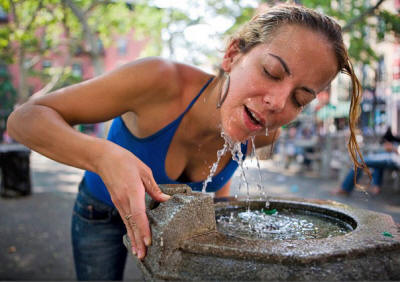
The Goethe University at Frankfurt
conducted another study: they found that a high percentage of
the bottled
water contained in plastic containers was
polluted with estrogenic chemicals.
The Environmental Working Group
(EWG) is a U.S. research and advocacy organization that acts as
a watchdog on behalf of citizens. They report,
"Unlike tap water, where
consumers are provided with test results every year, the
bottled water industry is not required to disclose results
of contaminant testing it conducts."
They felt the water bottle industry
is not held to the same safety standards of tap water.
Their tests revealed 10 brands that had pollutants, including
not only disinfection byproducts, but also common urban
wastewater pollutants like,
-
caffeine and pharmaceuticals
(Tylenol)
-
heavy metals and minerals
including arsenic and radioactive isotopes
-
fertilizer residue (nitrate
and ammonia)
-
a broad range of other,
tentatively identified industrial chemicals used as
solvents, plasticizers, viscosity decreasing agents, and
propellants
The Natural Resources Defense
Council (NRDC) is a U.S. non-profit, non-partisan
international environmental advocacy group and in 1999 they
tested 22% of brands and at least one sample of bottled drinking
water contained chemical contaminants at levels above strict FDA
health limits.
What can we do to drink with
confidence? Buy a good filter and use it!
















